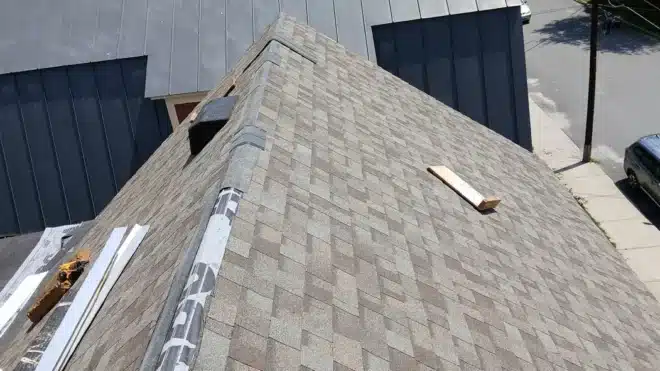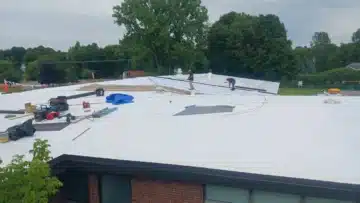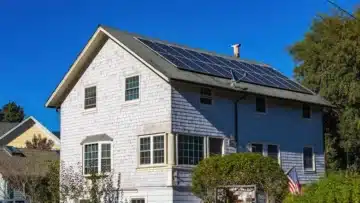- When disaster strikes and your roof is compromised, knowing what to do next can be overwhelming. Emergency roofing services are essential to safeguard your home against further damage, but with so many options available, it can be hard to know which path to take. In this guide, we’ll walk you through everything you need to know about emergency roofing services—what they entail, when you need them, and how to choose the right provider.
What Are Emergency Roofing Services?
Emergency roofing services are specialized operations designed to address urgent roofing issues that can lead to further damage if not repaired promptly. This includes fixing leaks, storm damage, and other critical repairs that must be done immediately.
At the heart of emergency roofing services is the objective to quickly restore safety and integrity to your home. Whether your roof has been compromised by a sudden storm or an unexpected leak, these professionals are equipped to assess and tackle the problem without delay. But what happens during these emergency calls? After an initial evaluation, the service provider will often take immediate measures, such as tarping or boarding up the affected areas, to prevent further water intrusion.
In some cases, additional repairs may be necessary once the immediate emergency has been addressed. These could involve replacing roofing materials, performing structural repairs, or even full roof replacements if the damage is extensive. Therefore, it’s vital to have a reliable emergency roofing service on speed dial, especially if you live in areas prone to severe weather.
When Do You Need Emergency Roofing Services?
Recognizing when to call emergency roofing services can save you from extensive damage. Common situations include leaks during heavy rain, storm-related damage, or fallen debris causing significant structural issues.
It’s essential to trust your instincts when it comes to the integrity of your roof. For instance, if you notice water stains on your ceiling, even in light rain, it’s a red flag. When heavy storms occur, monitoring your roof for missing shingles or visible damage can be crucial. Many homeowners mistakenly wait until the problem escalates, thinking they can manage it later. However, damage can worsen rapidly, leading to more expensive repairs.
In addition, events like fallen trees or high winds can leave your roof vulnerable. If you see any debris on your roof or notice that it has shifted or sagged, it’s advisable to contact emergency roofing services immediately rather than attempting to handle it yourself. Remember, safety should always come first.
How to Choose the Right Emergency Roofing Service
Not all roofing services are created equal, especially when urgency is a factor. Look for experienced professionals with good reviews, proper licensing, and insurance to ensure quality work during an emergency.
Moreover, don’t hesitate to ask for references from past clients. A reputable emergency roofing service will be more than happy to share their success stories. It’s equally important to ensure they offer guarantees on their work—this could be a saving grace if issues arise soon after the repair. Cost should also be a consideration, but remember that the cheapest option is not always the best. Quality workmanship is invaluable when it comes to protecting your home.
Lastly, check if the service operates 24⁄7. Emergencies don’t operate on a 9 to 5 schedule, and having someone you can rely on at any hour is crucial. This availability can make all the difference in effectively minimizing damage and keeping your home safe.
Cost Factors in Emergency Roofing Services
Understanding the potential costs involved in emergency roofing can help you budget accordingly. Factors influencing pricing include the extent of damage, materials used, and time of year, so it’s wise to get estimates from multiple providers.
Broken down, the costs might range from minor patchwork in response to small leaks to extensive repairs after severe storm damage. When seeking multiple estimates, be sure to discuss all details openly. Insufficient dialogue can lead to unforeseen expenses later. Ask about their payment structure as well—some companies might require deposits, while others may offer flexible payment plans.
Additionally, be aware of seasonal fluctuations in service costs. For example, summer months may witness higher rates due to greater demand for repairs following spring storms. Conversely, fall might provide more competitive pricing as companies strive to fill their schedules before winter hits. Being aware of these trends can allow you to make a more informed decision regarding the right timing for repairs.
Preventing Future Roofing Emergencies
Taking proactive measures can help avoid the need for emergency services. Regular inspections, proper maintenance, and timely repairs can keep your roof in good condition and better withstand storms and other stressors.
Start by scheduling annual roof inspections, ideally in the spring or fall, when severe weather is less likely. These inspections can reveal small issues before they escalate into major problems. A qualified roofing professional can assess potential weak points, such as aged shingles or corroded flashings, and advise on necessary replacement or repairs.
Furthermore, keep gutters clean to ensure proper drainage. Clogged gutters can cause water to pool on your roof and create leaks. Downspouts should also direct water away from your home’s foundation. Consider investing in quality roofing materials that offer better durability to withstand harsh conditions. After all, an ounce of prevention truly is worth a pound of cure.
Wrapping Up Your Roofing Emergency Plan
Being prepared for roofing emergencies can save you time, money, and stress. By understanding what emergency roofing services are and how they work, you can make informed decisions that protect your home. Remember to always prioritize safety and choose qualified professionals to handle your roofing needs when disaster strikes.



